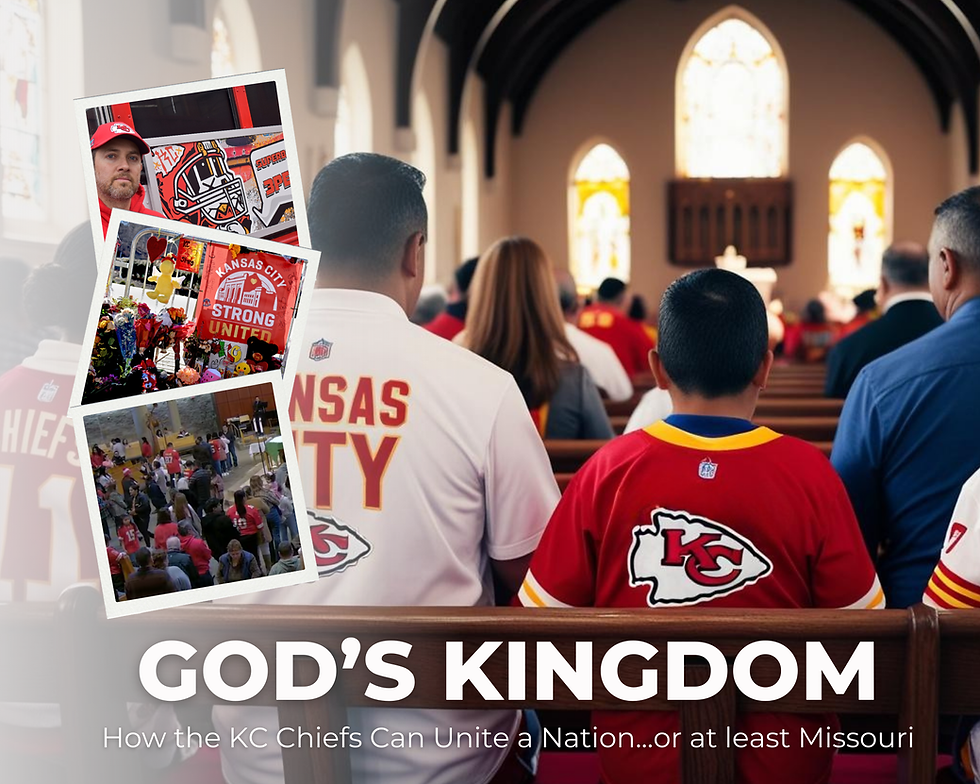Easter Gente: Holy Week in the Hispanic/Latino Diaspora
- leydenrovelo
- Apr 3, 2024
- 3 min read

Every Catholic of any ethnicity cherishes Easter. Leaving behind the season of penitence is second only to the resurrection of Our Lord. Semana Santa, or Holy Week, leading up to Easter is filled with wonderful religious traditions and customs in Latin America. But we can access them right here in Kansas City. Our Hispanic/Latino diversity is experienced in our Mexican, Central American and South American families.
Let's take a look at how different countries in Latin America celebrate Easter through their food and customs!
Mexican Easter Traditions
During the Passion of Christ, large processions of penitents can be seen in various Mexican cities. These processions include reenactments of the Last Supper and the Crucifixion, portraying the profound sacrifice and love of Jesus. In Iztapalapa, a district south of Mexico City, one of the world's largest and most renowned Easter celebrations takes place, involving the entire community in a theatrical representation of the biblical events.
Colombia's Magnificent Easter Processions
In Colombia, the city of Popayán is renowned for its extraordinary Easter processions, which have been recognized as UNESCO Intangible Cultural Heritage. From Holy Tuesday to Holy Saturday, the streets of Popayán come alive with five processions that traverse the city center.
These processions feature "pasos," which are beautifully adorned statues representing crucial moments in the Passion of Christ. Flowers and wooden decorations enhance the visual splendor of these religious symbols. The processions are accompanied by solemn music, creating a deeply moving atmosphere of devotion and reverence.
Honduras' Captivating Comayagua Carpets
In Honduras, during Holy Week one of the most cherished traditions is the creation of Comayagua carpets. These exquisite carpets capture the essence of tradition, spirituality, and profound reflection, adorning the streets with their vibrant colors and intricate designs. Crafted with meticulous care using colored sand, chalk, rice, and delicate flower petals, these remarkable works of art offer a truly immersive experience, providing a glimpse into the rich cultural heritage of Holy Week in Honduras.
Traditional Foods and Delicacies of Easter
No Easter celebration is complete without an array of mouthwatering dishes that reflect the culinary traditions of each Latin American country. Let's explore some of the delectable treats enjoyed during Holy Week and Easter.
Ecuador's Fanesca: A Symbol of Easter
In Ecuador, the traditional dish of Holy Week is "fanesca," a rich and flavorful soup that symbolizes the diversity of the country's regions. Fanesca is made with a variety of vegetables, codfish, and grains, creating a harmonious blend of flavors. It is typically served with "molo," a mashed potato-like dish, and "dulce de higos," candied figs. The preparation of fanesca is a labor of love, with families coming together to create this culinary masterpiece.
Paraguay's Delightful Chipa
In Paraguay, "chipa" takes center stage during Holy Week. These cheese rolls are made with cassava starch, milk, eggs, hard cheese, lard, and salt. The result is a delightful, slightly chewy bread with a cheesy and savory flavor. Chipa is enjoyed by families as a staple of Easter meals, representing a fusion of indigenous and Spanish culinary influences.
Mexico's Delicious Capirotada
In Mexico, traditional dishes like "tortas de camarón con nopales" (shrimp and cactus fritters) are a staple! However, served on Good Friday, Capirotada de Vigilia is a rich, cinnamon-infused sweet bread pudding which features layers of nuts, cheese, dried fruit and is not to be missed!
Easter for all Catholics is a time for celebration and song! For Hispanic/Latinos it is a reminder of what Pope Saint John Paul II said, "We are an Easter gente and aleluya is our cancion!"




Comments